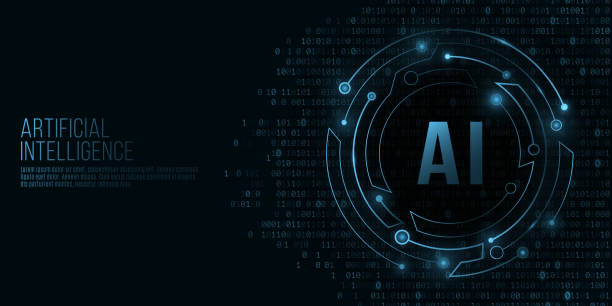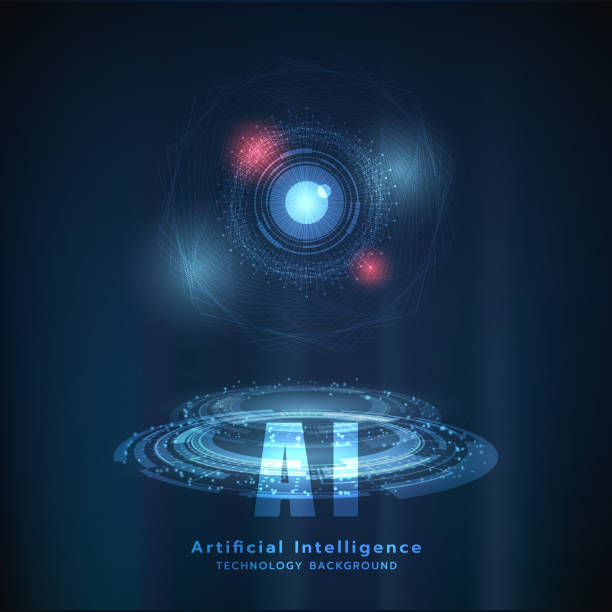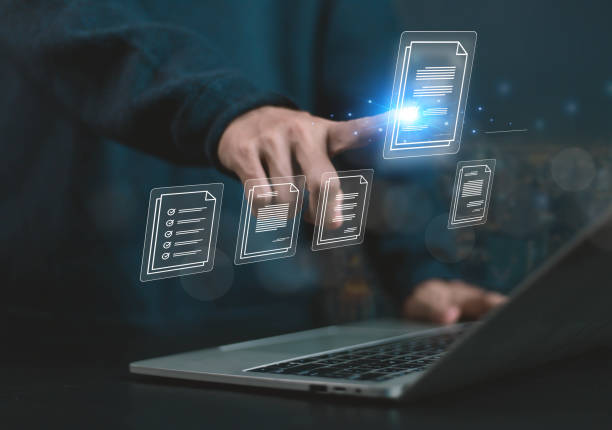What is an Artificial Intelligence Robot? Definition and Applications
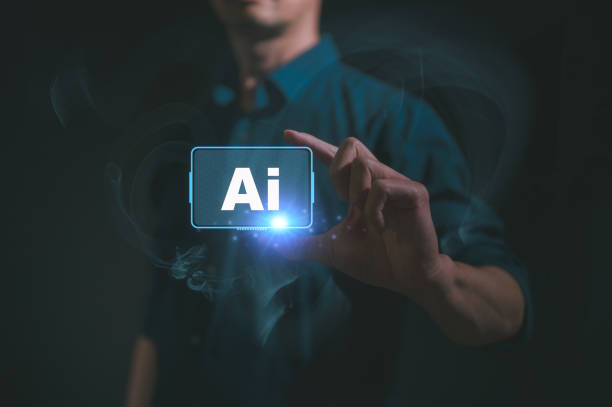
An Artificial Intelligence Robot (AI Robot) is a combination of two important technology fields: Artificial Intelligence (AI) and Robotics.
Simply put, an AI Robot is a physical or virtual machine that, using artificial intelligence algorithms, is capable of performing tasks that usually require human intelligence.
These tasks can include learning, reasoning, problem-solving, understanding natural language, and interacting with the environment.
The applications of AI robots are very broad and diverse.
In industry, intelligent robots are used in production lines to automate processes, control quality, and increase productivity.
In medicine, these robots are used in precise surgeries, disease diagnosis, and providing healthcare.
In customer service, chatbot robots are available 24 hours a day to answer customer questions, and in education, teacher robots help students learn various concepts.
Also, in the field of artificial space, intelligent robots are used in planetary exploration and data collection.
In general, an AI robot acts as a powerful tool to improve human lives and increase efficiency in various fields.
The ultimate goal of developing AI robots is to create systems that can operate independently and intelligently in the real world and respond to human needs.
Does your company’s website perform as befits your brand? In today’s competitive world, your website is your most important online tool. Rasaweb, a specialist in professional corporate website design, helps you to:
✅ Attract customer credibility and trust
✅ Convert website visitors into customers
⚡ Get free advice!
Main Components of an Artificial Intelligence Robot
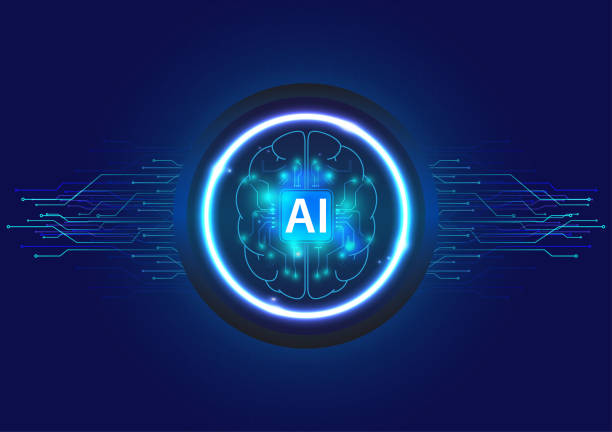
An AI robot consists of several main components, each of which plays an important role in its overall function.
These components include:
- Sensors AI robots need sensors to understand their surroundings.
These sensors can include cameras, microphones, touch sensors, temperature and pressure sensors, and so on.
Sensors collect information from the environment and transmit it to the robot. - Processors After the information is collected by the sensors, this information must be processed.
Processors (usually computers or microcontrollers) analyze the information and make the necessary decisions using artificial intelligence algorithms. - Actuators Actuators are responsible for performing physical actions in the environment.
These actuators can include motors, arms, wheels, and other mechanical components.
Actuators operate based on the commands of the processors. - Artificial Intelligence Algorithms The thinking brain of an AI robot is artificial intelligence algorithms.
These algorithms allow the robot to learn, reason, solve problems, and interact with the environment.
There are different types of artificial intelligence algorithms, including Machine Learning, Deep Learning, Natural Language Processing, and so on. - Software Software is the interface between the different components of the AI robot.
The software is responsible for controlling sensors, processing information, sending commands to actuators, and executing artificial intelligence algorithms.
The combination of these components forms an intelligent system capable of performing complex tasks and interacting with its environment.
The development and improvement of each of these components leads to the advancement of AI robots and the increase of their efficiency.
Types of Artificial Intelligence Robots in terms of Application
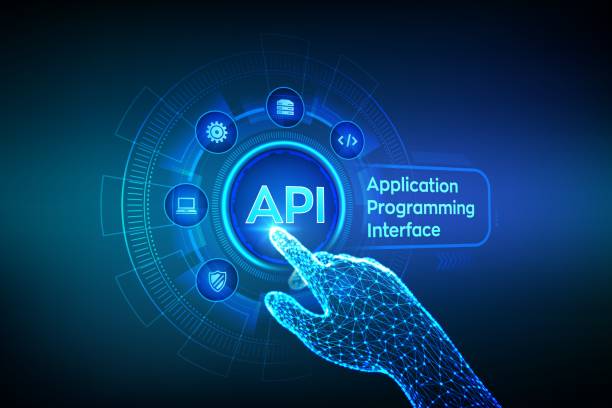
AI robots are divided into different types based on various applications.
Each type of these robots is designed and optimized to perform specific tasks.
Some of the most important types of AI robots are:
- Industrial Robots These robots are used in factory production lines to automate processes, move parts, weld, paint, and other repetitive and dangerous tasks.
Industrial robots usually have high accuracy and speed. - Medical Robots These robots are used in precise surgeries, helping the disabled, rehabilitation, disease diagnosis, and providing healthcare.
Surgical robots allow doctors to perform complex surgeries with greater precision. - Service Robots These robots are used in providing customer service, cleaning, security, transportation, and other service tasks.
Chatbot robots, cleaning robots, and delivery robots are examples of service robots. - Military Robots These robots are used in reconnaissance, bomb disposal, intelligence gathering, border surveillance, and other military tasks.
Military robots can be used in dangerous and inaccessible conditions for humans. - Space Robots These robots are used in planetary exploration, data collection, repair and maintenance of space equipment, and other space tasks.
Space robots can be used in harsh and unbearable conditions for humans.
In addition to these categories, AI robots can also be categorized based on the type of movement (such as wheeled robots, legged robots, flying robots) or the type of artificial intelligence used (such as robots based on machine learning, robots based on natural language processing).
| Robot Type | Application |
|---|---|
| Industrial | Automation of production lines |
| Medical | Precise surgery, healthcare |
| Service | Providing services to customers |
| Military | Reconnaissance, bomb disposal |
| Space | Planetary exploration |
Artificial Intelligence Algorithms Used in Robots
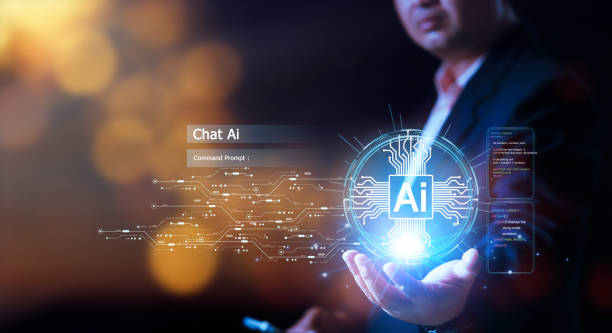
Artificial intelligence algorithms are the beating heart of intelligent robots.
These algorithms allow robots to learn, reason, solve problems, and interact with the environment.
There are different types of artificial intelligence algorithms that are used in robots, including:
- Machine Learning These algorithms allow robots to learn from data and improve their performance without explicit programming.
Machine learning includes various methods such as Supervised Learning, Unsupervised Learning, and Reinforcement Learning. - Deep Learning These algorithms use artificial neural networks with multiple layers to learn complex patterns from data.
Deep learning is used in fields such as Computer Vision, Natural Language Processing, and Speech Recognition. - Natural Language Processing These algorithms allow robots to understand and produce human language.
Natural language processing is used in chatbot robots, translator robots, and personal assistant robots. - Computer Vision These algorithms allow robots to understand and interpret images and videos.
Computer vision is used in industrial robots, medical robots, and military robots. - Expert Systems These systems collect the knowledge of human experts in a specific field and use it to solve problems and provide solutions.
Expert systems are used in medical robots, financial robots, and legal robots.
Choosing the right algorithm for an AI robot depends on the type of tasks the robot needs to perform and the type of data that is available.
Are you lagging behind in competition with large online stores?
Rasaweb, with professional online store website design, brings your business online and increases your market share!
✅ Increase brand credibility and customer trust
✅ Easy shopping experience leads to more sales
⚡ Apply now to receive free website design consultation!
Challenges and Limitations of Artificial Intelligence Robots
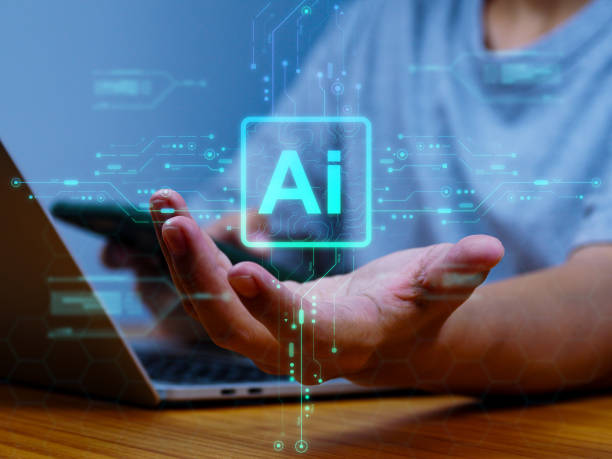
Although artificial intelligence robots have made remarkable progress, they still face many challenges and limitations.
Some of these challenges and limitations include:
- High Cost The development and construction of artificial intelligence robots is usually expensive.
This cost includes the cost of research and development, the cost of purchasing parts and equipment, the cost of training and maintenance, and so on. - Complexity Designing and building artificial intelligence robots is a complex and specialized process that requires high technical knowledge and skills.
- Technical Limitations Artificial intelligence robots are still inferior to human capabilities in many areas.
For example, robots have difficulty in understanding emotions, creativity, and decision-making in complex situations. - Ethical Issues The use of artificial intelligence robots raises many ethical issues.
For example, there are concerns about job losses, privacy, security, and accountability. - Data Dependence Machine learning algorithms require a lot of data to function properly.
Collecting and preparing this data can be time-consuming and costly.
Despite these challenges and limitations, it is expected that with the advancement of technology, artificial intelligence robots will play a more important role in our lives in the future.
Future of Artificial Intelligence Robots
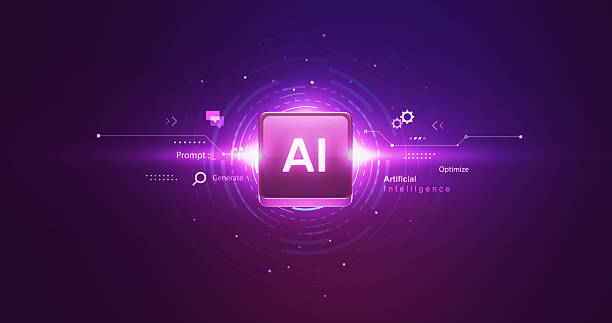
The future of artificial intelligence robots looks very bright and promising.
With the advancement of technology, intelligent robots are expected to play a more prominent role in various aspects of our lives.
Some of the important trends in the future of artificial intelligence robots include:
- Increasing Intelligence Robots will become more intelligent and independent in the future.
They will be able to solve more complex problems, make better decisions, and interact more effectively with their environment. - Expanding Applications The applications of robots will expand in various fields.
Robots will be used in industry, medicine, services, education, agriculture, and other fields. - Reducing Cost With increased production and technological advancements, the cost of robots will decrease.
This will make robots accessible to a wider range of people and organizations. - Better Interaction with Humans Robots will be able to interact more naturally and effectively with humans in the future.
They will be able to understand human language, respond to human emotions, and collaborate with humans. - Development of Self-Replicating Robots Self-replicating robots will be able to replicate themselves and independently continue their development and expansion.
These robots can be used in space exploration, construction, and other fields.
In general, the future of artificial intelligence robots is full of new and exciting opportunities.
However, we must also pay attention to the challenges and ethical issues associated with the development and use of robots.
Artificial Intelligence Robots and Their Impact on the Labor Market

One of the most important concerns about artificial intelligence robots is their impact on the labor market.
Many people are worried that robots will replace human jobs and cause increased unemployment.
While these concerns are partly true, it should also be noted that robots can also create new job opportunities.
In fact, robots are mostly used in performing repetitive, dangerous, and difficult tasks.
This allows humans to focus on more creative, complex, and valuable tasks.
Also, the development and maintenance of robots require new specialists who are specialized in fields such as robotics engineering, artificial intelligence, and data science.
To be able to benefit from the advantages of artificial intelligence robots in the labor market and prevent their negative effects, we must take appropriate measures.
These measures include:
- Education and Skills Training We must train people for the new jobs that are created by robots.
This training should include technical skills, soft skills, and problem-solving skills. - Development of Support Policies We must develop support policies for people who lose their jobs due to robots.
These policies can include unemployment insurance, retraining, and creating new job opportunities. - Development of Laws and Regulations We must develop laws and regulations for the use of robots in the labor market.
These laws should address issues related to privacy, security, accountability, and discrimination.
By taking these measures, we can use artificial intelligence robots as a powerful tool to improve the labor market and increase the welfare of society.
| Jobs at Risk of Replacement by Robots | New Jobs Created by Robots |
|---|---|
| Machine Operators | Robotics Engineers |
| Production Line Workers | Artificial Intelligence Specialists |
| Cashiers | Data Analysts |
| Drivers | Robot Maintenance Specialists |
| Administrative Staff | Robot Trainers |
Artificial Intelligence Robots and Ethics

The development and use of artificial intelligence robots raises important ethical issues that must be addressed.
Some of these ethical issues include:
- Privacy Artificial intelligence robots can collect a lot of information about humans.
This information can include personal information, financial information, health information, and so on.
The collection and use of this information must be done in compliance with people’s privacy. - Security Artificial intelligence robots can be misused.
For example, robots can be used for cyber attacks, espionage, and other illegal activities.
To prevent these risks, we must take appropriate security measures. - Accountability If an artificial intelligence robot makes a mistake or causes damage, who will be responsible? Will the robot manufacturer, the robot owner, or the robot itself be responsible? Determining accountability for robots is a legal and ethical challenge.
- Discrimination Artificial intelligence robots can unintentionally be discriminatory.
For example, a facial recognition algorithm may not correctly recognize people with a particular skin color.
To prevent discrimination, we must design and test artificial intelligence algorithms fairly. - Control Who should control artificial intelligence robots? Should the government, companies, or individuals have this control? Determining who controls robots is a political and social issue.
To solve these ethical issues, we need to start a public and international dialogue about the values and principles that should be observed in the development and use of artificial intelligence robots.
Did you know that 94% of first impressions of a company are related to its website design?
Rasaweb helps you create the best first impression by providing professional corporate website design services.
✅ Create a professional and reliable image of your brand
✅ Easier attraction of potential customers and improvement of online position
⚡ Get free corporate website design consultation
Introducing a Few Successful Examples of Artificial Intelligence Robots
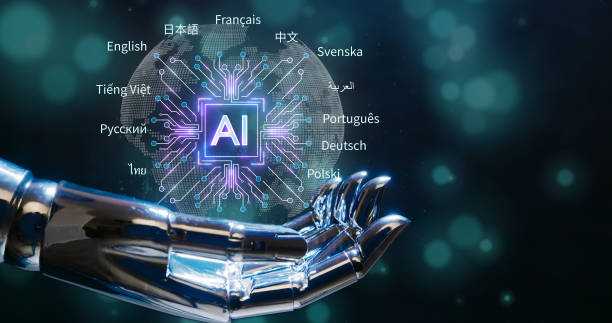
Currently, numerous artificial intelligence robots have been successfully used in various fields.
Some of these successful examples include:
- Chatbot Robots Chatbot robots are used in customer service, technical support, and sales.
These robots can answer customer questions 24 hours a day and help them solve problems. - Surgical Robots Surgical robots allow doctors to perform complex surgeries with greater precision.
These robots can reduce the doctor’s hand tremor and provide better visibility for him. - Warehouse Robots Warehouse robots are used in warehouses to move goods, sort packages, and manage inventory.
These robots can increase the speed and accuracy of warehousing operations. - Self-Driving Cars Self-driving cars can move on roads without the need for a human driver.
These cars use sensors and artificial intelligence algorithms to detect their surroundings and make decisions about how to drive. - Explorer Robots Explorer robots are used on other planets to collect information and perform experiments.
These robots can be used in harsh and inaccessible conditions for humans.
These examples show that artificial intelligence robots have a high potential to improve our lives in various fields.
As technology continues to advance, more intelligent robots are expected to be used in the future.
How to Start Learning Artificial Intelligence Robots
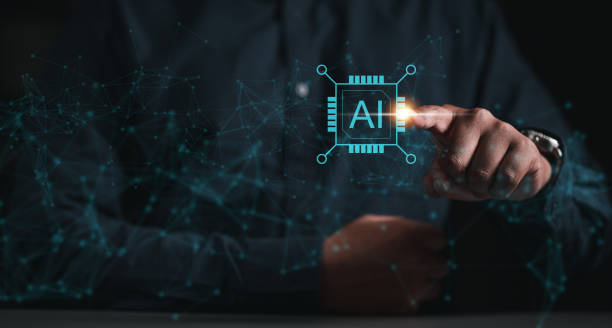
If you are interested in learning artificial intelligence robots, there are different ways to start.
Some of these ways include:
- Taking Online Courses There are numerous online courses on robotics and artificial intelligence that you can use to learn basic and advanced concepts.
Coursera, edX, and Udacity are among the platforms that offer high-quality courses in this field. - Reading Books and Articles There are many books and articles on robotics and artificial intelligence that you can use to learn concepts in more depth.
- Participating in Workshops and Seminars Participating in workshops and seminars can help you get acquainted with experts in this field and use their experiences.
- Joining Online Communities There are numerous online communities on robotics and artificial intelligence that you can join and exchange ideas with other enthusiasts in this field.
- Doing Practical Projects The best way to learn robotics and artificial intelligence is to do practical projects.
You can start by building a simple robot and gradually do more complex projects.
To start, you can start by learning the Python programming language.
Python is a popular programming language in the field of artificial intelligence and has numerous libraries for working with robots and artificial intelligence algorithms.
After learning Python, you can get acquainted with libraries such as TensorFlow, Keras, and PyTorch and use them to build artificial intelligence models.
In general, learning artificial intelligence robots is a gradual process that requires patience and perseverance.
With effort and practice, you can achieve high skills in this field.
Frequently Asked Questions
| Row | Question | Answer |
|---|---|---|
| 1 | What is an artificial intelligence robot? | An artificial intelligence robot is a machine capable of understanding, reasoning, learning, and problem-solving, and can perform complex tasks with relative autonomy. |
| 2 | What are the most important applications of artificial intelligence robots? | The main applications include industrial production, customer service (chatbots), medicine and surgery, self-driving transportation, space exploration, and military affairs. |
| 3 | What is the main difference between an artificial intelligence robot and a regular robot? | A regular robot only follows programmed instructions, while an artificial intelligence robot can learn from data, make decisions, and adapt to new environments. |
| 4 | How do artificial intelligence robots learn? | They identify patterns and improve their performance through machine learning algorithms (such as deep learning, reinforcement learning) and processing a huge amount of data. |
| 5 | Can artificial intelligence robots have emotions? | Currently, artificial intelligence robots do not have real emotions in the human sense. They can imitate or recognize emotions, but they do not understand and experience them. |
| 6 | What are the current limitations of artificial intelligence robots? | Limitations include the need for a lot of data, the inability to understand abstract concepts, the lack of real creativity, ethical issues, and the challenges of generalizability in new environments. |
| 7 | What is the role of artificial intelligence in the development of humanoid robots? | Artificial intelligence helps humanoid robots to walk, maintain their balance, understand their surroundings, interact with humans, and perform complex tasks. |
| 8 | How is the future of artificial intelligence robots predicted? | Artificial intelligence robots are predicted to become smarter, more autonomous, and able to perform more complex tasks in everyday life and industry, and their interaction with humans will increase. |
| 9 | Can artificial intelligence robots replace all human jobs? | It is unlikely that all human jobs will be replaced. Robots take on many repetitive and dangerous tasks, but jobs that require creativity, empathy, and ethical judgment will remain. |
| 10 | What ethical and social challenges arise with the expansion of artificial intelligence robots? | Challenges include issues related to privacy, data security, ethical decision-making by robots, the impact on employment, and accountability in the event of an error. |
And other services of Rasa Web Advertising Agency in the field of advertising
Smart Marketplace: An effective tool to improve SEO ranking with the help of Google Ads management.
Smart Website Development: A new service to increase website visits through precise audience targeting.
Smart Digital Advertising: A new service to increase website visits through precise audience targeting.
Smart Sales Automation: Transform digital branding with the help of attractive user interface design.
Smart Brand Identity: A professional solution for managing campaigns with a focus on SEO-based content strategy.
And more than hundreds of other services in the field of internet advertising, advertising consulting, and organizational solutions
Internet Advertising | Advertising Strategy | Advertorial
Resources
How do robots work?
,The development of artificial intelligence in other governments and what measures has the government taken?
,Are large artificial intelligence companies developing unemployment tests?/New standards will pave the way
,

